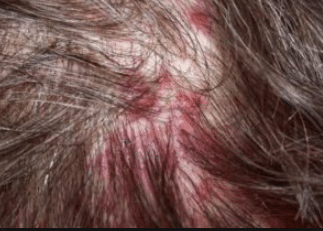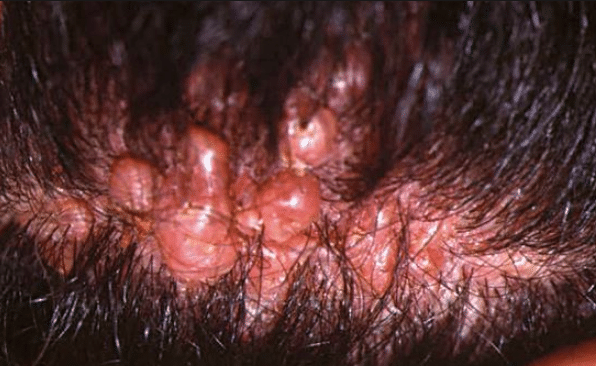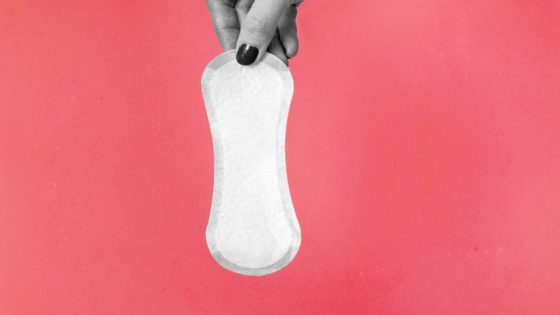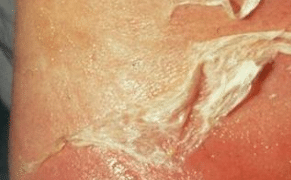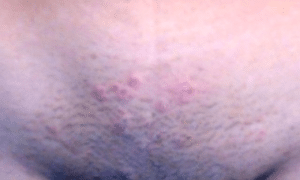Can you get ingrown hair on your scalp? What does an ingrown hair look like on your head? How do I bring an ingrown hair to the surface? Get more insight about the causes of ingrown hairs, infected ingrown hairs, best shampoo, and how to remove ingrown hairs on the scalp.
Ingrown Hair on Scalp Causes
Causes of ingrown hair on the scalp include:
- Shaving techniques
The adoption of poor shaving techniques in removing hair on the head is likely to result in the development of ingrown hair on the scalp. Basically a person who has the tendency of not taking precautionary measures during shaving or reducing hair on the head is likely to develop tiny red bumps on the scalp which can be painful.
- Clogged hair follicles
An individual who have ingrown hair on the scalp, it could be due to clogged hair follicle on the head. The hair follicles can harbor dead skin cells and debris. This can cause the tip of the hair to grow sideways and downwards back to the skin of the scalp.
- Naturally curly or coarse hair
Ingrown hair on the scalp is commonly identified with men who have curled hair especially the African – American. Such tightly curled hair tends to grow sideways and the tip cuts the skin of the scalp trapping the hair back.
- Skin care products
Skin irritating chemicals and other counterfeit beauty hair products are linked to be the cause of the ingrown hair on the scalp. Such products are believed to cause irritation of the skin making the scalp to have cluster of bumps on the scalp with hair trapped in.
- Accumulated dirt and dead skin cells
Accumulation dirt may cause clogging of skin pores with some beauty care products can be the reason for the appearance of the pimples on the scalp with hair trapped in.
- Genetic factors
Individuals may have ingrown hair on the scalp as a result of the genetic and general health, this can influence the more hair growth which get trapped in the skin.
- Extrafollicular penetration
It is a dermatological condition common in men of African ancestry. The condition is also referred to as pseudofolliculitis barbae, it is a common inflammatory follicular disorder characterized by papules and pustules which are bumps like pimples. The condition is generally associated with shaving in men.
Shaving creates sharp edge on the hair, especially if shaving was done when the hair is dry. As the hair grows out, it may curve back and re-enter the skin forming what is commonly known as ingrown hair. This is through extrafollicular penetration.
- Transfollicular penetrations
This occurs when the hair fails to reach the surface of the skin. Here, the hair grows underneath the skin to form the ingrown hair. This is common while tweezing as the process leaves hair fragments under the surface of the skin. The skin becomes inflamed as the hair finds its way back to the skin surface. This is because; the body detects it as a foreign substance.
- Folliculitis
This refers to the damaging or infection of the hair follicles. Folliculitis is a common cause of inflammation of the hair follicles and is known to cause ingrown hair. As the hair follicle becomes inflamed, they may become clog blocking hair from penetrating the skin thus forming an ingrown air on scalp.
The hair follicles may also accumulate pus, dead skin cells and other fluids to form painful and itchy bumps on the surface or beneath the skin as is the case with blind pimple.
Other possible causes
Apart from the above causes, the following might also cause or contribute to the formation of an ingrown hair.
- Lack of skin moisture
- Hirsutism which is the abnormal hair growth on a person’s body
- Bacterial and fungal infection causing ingrown hair
- Dry scalp skin causing ingrown hair
- Shaving to close to the skin damaging the hair follicles
- Friction from wearing too tight clothing
Ingrown Hair on Scalp Symptoms
Do you know symptoms of ingrown hair on the scalp? Hair can get trapped into the skin of the scalp for the most part in men especially the jaw region and the cheeks. Men are more defenseless to have bumps on the scalp since they tend to shave more than the females.
Additionally, most ladies get ingrown hair significantly on the armpits, pubic zone and the legs, you may see a few likenesses in the indications and signs that can be found in men too.
Here are the side effects of pimple because of ingrown hair on the scalp:
- Individuals may encounter tingle and experience pain on the scalp
- Red or pink like knocks on the skin demonstrating irritation
- If the ingrown hair is contaminated, a man may encounter discharge filled bumps
- They may on occasion seem like minor pimples with a white head
- Dark spot at the focal point of a knock indicating caught hair developing
Ingrown Hair Scalp Cyst
Have you ever had an ingrown hair cyst on your scalp? Ingrown hair on the scalp cyst is basically a hair follicle cyst also called trichilemmal cyst. It is important to know those ingrown hair cysts are mostly found on the scalp. These kinds of cysts are smooth in appearance, mobile and are normally filled with keratin.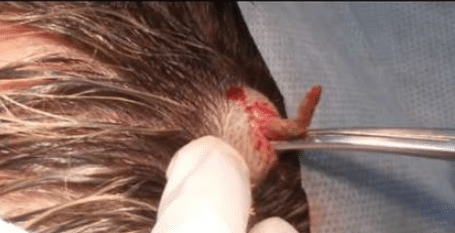
Trichilemmal cyst, studies shows that it is likely to be a genetic condition that tends to flow in generation of families. If you have ingrown hair cyst it may appear tender or inflamed. However, that entirely depends on whether the cyst on your scalp is ruptured or not.
The only cure for ingrown hair cyst on scalp can be done through surgical excision. According to reliable sources, the method of treatment of an ingrown hair cyst on scalp varies depending on the physician training since some physician prefer performing the surgical procedure under local anesthetic others would do it in a more conservative approach.
Note: Usually your healthcare provider will carry a biopsy test to treat bumps with hair on scalp cyst.
Ingrown Hair on Scalp Pictures
How does ingrown hair on the scalp look like? To assist you understand how shaving bumps on your scalp look like; below are some picture of infected ingrown hair on your head. There are also more images and photos in the article to help you identify with your symptoms.
Ingrown hair on the scalp can look like small sometimes raised red or pink bumps on the scalp. A person may clusters of spots on the scalp that are often scattered throughout the area that is already shaved, and then it would imply the development of ingrown hair.
In some situations, they are occurring as tiny blisters with a white head with a visible dark dot at the center of the razor bumps where the hair is trapped.
An individual may expeience an inflammation of the skin around the area where the ingrown hair is trapped; it may be sometimes appearing as reddish which at times is pus-filled. This can make a person feel discomfort and itchy coupled with pain.
Ingrown hair on the scalp should not be confused with other skin conditions which look like trapped hair growing underneath the skin. For instances, acne, cyst atopic dermatitis, eczema or heat rush are some of the commonly mistaken conditions that resembles ingrown hair on the scalp.
Best Shampoo for Ingrown Hair
Mild antiseptic hair care product can be used in treating the ingrown hair. A person is needed to avoid hair and skin care product that might be too sensitivity the scalp or might cause allergic reaction worsening the condition.
Mild shampoo and other hair care products can be attained over-the-counter. According the characteristics of your hair and how moisturized or dry your scalp is, a professional hair care personal or a dermatologist will be able to prescribe the best shampoo to use for ingrown hair on the scalp.
Infected Ingrown Hair on Head Woman
People who have an inflammatory disorder of the hair follicles on the scalp are probably suffering from scalp folliculitis which is also called acne necrotica or proprionibacterium folliculitis, this condition occurs on the scalp as small, itchy and cause trouble on the frontal hair line on the scalp.
The appearance of a bacterial or yeast infection on the scalp make the ingrown hair on the scalp to become inflamed causing yellowish or pus discharge that can be painful.
Treatment for folliculitis on scalp involves washing the infected scalp with shampoo as much as you can. You may be required to buy antidandruff shampoos to remove the ingrown hair completely.
Again, if the infected scalp does not cause any serious health risk, use topical antibiotics such as fusidic acid gel or clindamycin to wash your scalp.
Ingrown hair on Head long hair
Do you have big Ingrown hair on the scalp from long hair? If you have an infected ingrown hair follicle, sometimes the surrounding skin on your scalp gets inflamed and can spread deep down into the hair follicle.
The inflammation or infected scalp may result to a raised big ingrown that look like a bump in your long hair. Occasionally you may spot a puss- filled ingrown hair that itch and painful.
Some individuals may they develop a big ingrown hair cyst that gets trapped deep underneath the skin making it impossible to remove with a pair of tweezers.
However, if the ingrown hair is as a result of long hair growth (hirsutism), your doctor can tell if the excessive long hair growth can be treatable hormonal abnormalities such as polycystic ovary syndrome. Therefore, ingrown hair shouldn’t warrant any reason for concern.
Painful Hair Growing Underneath Scalp
This could be due to infection that is either a bacterial infection or viral infection. It is however important to note that most cases of ingrown hair are not serious. For those with health immune system, the pain will clear up on its own within a week or two.
For those with weak immune system, the lesions or bumps formed by the ingrown hair will take long. If this is the case please contact your health care provider for medical assistance.
Most symptoms associated with the pain will include inflammation and itching. For mild cases, these symptoms can be managed and treated at home. Maintaining high levels of hygiene will be helpful in ensuring the cyst is not infected by either bacteria or any other micro-organism causing infection.
Applying aloe Vera gel can also help kill bacteria’s and relive the scalp of the itching and inflammation. Chamomile tea wash and oatmeal bath can also be helpful in getting rid of the itching, inflammation and swelling in booth children and adults.
Note: The best preventive measure for the ingrown hair is ensuring you adopt hair removal method that do not irritate or damage the hair follicles.
Ingrown hair on scalp after haircut
Is it possible to get ingrown hair after haircut or shaving your head? Unique bumps might pop up on your scalp after haircut, sometimes dead skins and on your head can clog up the hair follicles of your scalp resulting to hair growing underneath the skin of your scalp.
Men with sensitive scalp skin and they have the tendency of using razor burn to cut hair on scalp, chin or cheek are likely to get bumps with hair trapped in. Treatment involves shaving properly; avoid applying too much pressure to the razor and shaving too close to the scalp.
After haircut, wash the skin of scalp with preferably water that contains salicylic acid, this will prevent the pores of the hair follicle of your scalp from clogging.
Note: Maintaining a healthy scalp and regular scalp wash may help clear out the dead tissue and bacteria that tend to accumulate on the scalp.
Ingrown Hair on scalp with a Bump
Ingrown hair has same features to pimples and often accompanied with pus. The accumulation of pus, sebum and blood may result in the formation of a bump on the head. This bump is often painful and tender.
Home base application of antibiotic ointments or home remedies like turmeric or honey, with strong antiseptic properties can be beneficial. Also, application of tea tree oil can also be beneficial as tea tree oil is a strong anti-biotic and prevents secondary infection.
Ingrown Hair on scalp of baby
Do scalp ingrown hairs occur on toddlers? In most situations, the head is the area that is mostly affected. After all, it is the only body part one would expect hair on an infant.
Ingrown hair on the scalp appears due to the friction experienced by this region. The friction may be a result of shaving, tight clothing and other substances like oils. In some cases, the ingrown hairs can develop into an infection.
Note: Does Ingrown hair on bald head occur? Ingrown hairs will usually occur where there is hair. If you notice something similar to an ingrown hair on a bald head then seek medical attention. It can be something else.
Ingrown Hair on the Back of my Head
Most men consider haircuts on the back of the head, forehead and temple. If you have not experienced it, just look around, you will notice a couple of individuals especially African-Americans men with ingrown hairs on the back of the head and part of the neck region.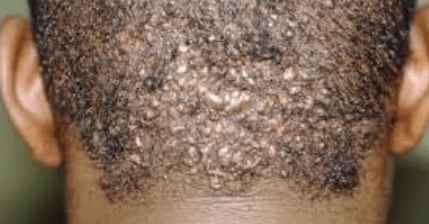
Main key factor that may contribute to the backward growing hair in these regions is the kind of razor your barber uses or if he uses the wrong kind of razor. In addition to the razor, repeated and poor shaving techniques for instance shaving too close to your skin and against the hair growth direction can result to ingrown hairs at the back of the head and the upper neck region.
What Complications are Associated with Ingrown Hair on the scalp?
Ingrown hairs, if left untreated, can lead to serious complications such as:
- One of the main complications associated with ingrown hairs are bacterial infections. This is especially true when the person picks and/or scratches the skin surrounding the trapped hairs.
- Undiagnosed and/or untreated ingrown hairs can lead to temporary or permanent acne-like scarring.
- An infected and/or inflamed ingrown hair can cause pigmentation (coloring of the skin) at the site. It is important to note that some treatments may be responsible for pigmentation.
How to get rid ingrown hair on scalp
Treatments include:
- Proper hygiene
To maintain utmost hygiene, you need to wash the affected area of the scalp (in fact the entire head) with antibacterial/antiseptic shampoo.
- Apply antiseptic ointment
Once the hair is dried apply antiseptic ointment topically on the affected area. The dermatologist will prescribe the right group of antiseptic depending on your skin type. You might need to consume antibiotic to check the accumulation of dead skin cells on the scalp. This way you can prevent the pores being clogged.
- Use antibiotics
Take oral antibiotics considering its effect on the secondary bacterial infection on the scalp. The antibiotics are supposed to be prescribed by a doctor or medical professional.
- Apply hydrocortisone cream
If you are experiencing inflammation and itching, use creams such as hydrocortisone cream on the bumps 2-3 times per day. According to livestrong.com, ensure you rub it in well so it doesn’t dry on your hair and leave a white film. The hydrocortisone cream reduces inflammation and helps control itching.
- Use hot compressor
Try hot compress on your scalp for 15 minutes three times per day. This home remedy will help the bumps to drain thus allowing the hair to come out with ease.
Steps on ingrown hair on the scalp removal
- Step one
Soften the skin with a wash cloth that has been soaked in warm water. This will help the bump to open and let the hair out with ease.
- Step two
Using a pair of disinfected tweezers, gently get hold of the hair at its bend above the sore and pull the free ingrown end out. Never should you pluck out the whole hair as this may lead to a further infection.
- Step three
Apply benzyl peroxide or another recommended skin product that can soothe the affected area.
Prevention measures of ingrown hair on the scalp of head
- Allow or let your hair grow out and avoid any form of hair removal from your head. If it is necessary that you trim it, keep it at a length of 3.175 millimeters to 6.35 millimeters. The length is a recommendation by the University of Mississippi Health Care.
- Avoid razors and instead use scissors or barber clippers to shave it. If you must use a razor, make sure it is the right razor; not old, sharp, new etc. Also, consider visiting an experienced barber.
- Avoid anything that can cause friction on your head. This includes wearing hats or any other form of material on your head. This will help in reducing irritation while promoting quick healing.
- Keep your scalp and the neck region clean. Wash your scalp daily. You can as well shampoo your hair. Cleaning your scalp everyday will get rid of dead skin cells and keep your scalp frees of dirt.
FURTHER REFERENCES
- Ingrown Hair on the Scalp: http://www.medhealthdaily.com/ingrown-hair-on-scalp/
- Simple Ways to Remove an Ingrown Hair with Bump on Head: http://www.simple-remedies.com/hair-care/ingrown-hair-on-head.html
- How to Remove an Ingrown Hair Quickly, Easily, and Without Any Lasers Whatsoever: https://www.bustle.com/articles/57123-how-to-remove-an-ingrown-hair-quickly-easily-and-without-any-lasers-whatsoever
- Topic: Ingrown hairs on back of neck (Read 8745 times): http://www.slybaldguys.com/smf/index.php?topic=16264.0
- Ingrown Hair on Head Scalp Pictures, Symptoms, Removal & Treatment: http://durablehealth.net/ingrown-hair/ingrown-hair-head-scalp-pictures-symptoms-removal-treatment/
- Ingrown Hair: https://www.webmd.com/skin-problems-and-treatments/guide/ingrown-hair-causes-symptoms-treatment#1


